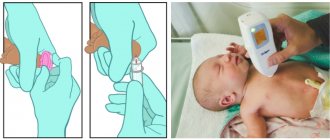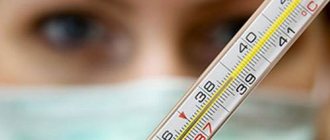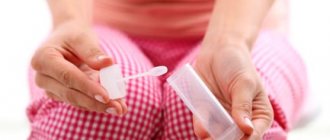The need for analysis
Despite the difficulties, all babies donate blood within the first month of life. These tests are necessary: to determine allergies if the baby’s skin is prone to rashes.
Biochemical blood test for a baby - if there is a suspicion of serious diseases, for example, diabetes.
Determination of blood group in emergency situations involving blood transfusion.
Drawing blood from a vein for a child is certainly stressful, so it is important to know how blood is taken from a vein from a baby and prepare accordingly.
Preparing for analysis
Preparation for blood sampling from newborns comes down, first of all, to preparing the parents. The baby himself does not need to do anything special: the essence of what is happening is not clear to him. The only thing the baby will feel is short-term pain, but not severe. Of course, some difficulties may arise if the nurse does not immediately get into the vein. In this case, the child will have to be injected again. However, qualified medical personnel perform this procedure frequently and no particular problems should arise.
When taking blood from a vein, the baby must be held in your arms: the warmth of the mother will reflexively calm him down in an unknown environment. After entering the manipulation room, it is necessary to let the baby look around and get used to the unfamiliar room, as well as the medical worker who will touch the child.
During the procedure, it is better to hold the baby in your arms
The mother of a newborn should have complete calm, because the baby perfectly feels the mother’s condition: nervous tension and stress will involuntarily be transferred to him. During the actual blood draw from the child, it will be good if the nurse manages to distract the baby’s attention, for example, with a bright toy.
Especially worried mothers can additionally use one cunning trick: smear the injection site with anesthetic cream. In this case, even the moment of the injection itself will be practically invisible to the baby. Children's doctors recommend using Emla cream in such cases; it is available at any pharmacy. The action will be similar to the use of Menovazin liquid.
The use of the latter, however, should be discussed with your doctor. By the way, it must be said that these drugs are successfully used by older children, as well as in some cases by adults. The mechanism of the ointment is simple - it freezes an area of skin and deprives it of sensitivity. The use of such drugs will make visiting the manipulation room less stressful for the child, which in itself is a big plus.
What needles and syringes are used for babies?
The choice of syringe for drawing blood from a child depends on the amount of blood needed for a particular type of analysis.
Currently, laboratories have a wide range of instruments for collecting material. There are various syringe tubes and entire systems for vacuum blood sampling, which differ in the color of the caps. Each of these tubes already contains a specific preservative reagent for research. The principle of operation of vacuum tubes is simple: there is a vacuum inside, which will not allow blood to flow from the vein in a larger volume than required. Thanks to this, the tube is filled in a matter of seconds. The system's needle does not allow blood to come into contact with the external environment, so foreign impurities cannot get inside and affect the reliability of the analysis.
Syringe tubes for vacuum blood collection
The test tube needle has a special silicone coating, which makes it easier to insert into a vein and makes the process of collecting material more painless. A huge advantage for the laboratory specialist is that the test tube system is equipped with a rubber gasket to prevent backflow of blood, so contact of the material with the skin of the healthcare worker is minimized.
Blood collection procedure
As already mentioned, infants' blood vessels are significantly smaller. For this reason, blood is drawn from slightly different places than in an adult. Typically, blood is drawn from the back of the hand or from a crown on the head. Despite the fact that the procedure looks alarming, the wreaths in these areas of the body are most visible, and the chance of ending up in them the first time is highest there.
Young parents are often interested in the question - how do they take blood from a vein from a baby? This procedure is carried out in the same way as in adults: the hand is tightened with a tourniquet, the injection site is smeared with alcohol, an injection is made with a needle, the blood is collected in a test tube or vacuum system, then the tourniquet is removed, the needle is pulled out and a cotton swab with alcohol is placed.
There are some rules developed by doctors that will allow you to collect the required amount of blood at one time, without making additional injections. So, instead of the usual 1.5 ml of blood, you can collect the required 5 ml. To do this, on the day of taking a blood test from a vein in a baby, you need to feed the baby generously and give him 50 ml of the liquid that he usually drinks.
You can feed your child if there is no need to take tests on an empty stomach. If you donate blood to determine glucose, where eating food is extremely contraindicated, it is better to discuss this point with a pediatrician. In this case, it is necessary to take a sugar test as early as possible in the morning.
Also, you should pay attention that at the moment when the blood is drawn, the baby’s hands are warm. This is the most important requirement that will enable the worker to collect the required amount of material. Therefore, if you come from the cold or the treatment room is cool, be sure to warm your baby’s hands.
It is important to hold the child so that he is comfortable and comfortable, and to give him the opportunity to look around and calm down before donating blood. There are times when a laboratory assistant may ask parents to leave the office and leave the child. Treat the request with understanding. If taking blood in a medical institution is practiced this way, then you can be sure that everything will go correctly. But after the procedure, give your child warm and positive emotions, do his favorite things with him in order to completely erase the negative trace.
Taking blood from the heel of a newborn
Many hospitals have recently taken the practice of taking blood from babies from a finger or heel: just a couple of drops of blood applied to a test strip is enough to carry out a variety of tests. Such small changes yielded excellent results: parents stopped being afraid of causing their baby such torment. This technology is successfully used in private clinics, but you can also ask about this method in a government institution.
Blood test for allergies in children - MEDSI
Table of contents
- Why donate blood?
- Indications
- Advantages compared to skin testing
- Preparation
- How is the analysis done?
- Analysis transcript
- Advantages of carrying out the procedure at MEDSI
A blood test for allergies in a child is a test for antibodies of a general and specific type, which helps not only to confirm suspicion of allergies (in differential diagnosis), but also to identify allergens without exposing the child to the risk of developing a hypersensitivity reaction, that is, without contact with the allergen.
Why donate blood?
The immune system responds to foreign stimuli (viruses, microbes, fungi, and allergens) by producing antibodies (in this case, the formation of an immune complex with the IgE protein), which are specific and circulate in the blood for a long time after contact (sometimes for life). The study allows us to identify these antibodies and determine the irritant that formed them.
Indications
An analysis to determine allergies in a child is prescribed if there are characteristic symptoms that suggest a hypersensitivity reaction:
- Seasonal rhinitis, obsessive sneezing, lacrimation
- Prolonged cough, shortness of breath, difficulty exhaling and inhaling, laryngospasm
- Rash on the skin and/or mucous membranes, redness, itching, local swelling
To clarify the cause, it is prescribed when established:
- Hay fever
- Asthmatic bronchitis, asthma
- Dermatitis (contact, atopic)
- Reactions to food, medications (usually antibiotics, serums)
- Helminthic infection (infection with worms)
Advantages compared to skin testing
- For skin tests, the drugs are applied to the damaged epidermis of the forearm (scarification test) or intact integument of the upper back (skin test). When collecting blood, there is no contact with allergens. This is important for children with hypersensitivity (history of anaphylaxis, angioedema) and skin diseases
- Evaluation of such a sample requires two repeated visits to the doctor (on days 2 and 4) - the IgE test is taken once
- After a skin test, you should not wet or rub the places where the drugs are attached - after taking blood, you can behave as usual
- Intradermal tests involve many punctures, which greatly traumatizes the baby and increases the risk of infection. Blood sampling for diagnostics - just one puncture
- The accuracy of immunological research is higher, since there are fewer possible errors (especially with proper preparation)
Preparation
- A blood test to determine allergies in a child is recommended to be carried out in remission (no acute reaction)
- A few days (a week) before it is carried out, potential allergens are excluded from food and everyday life, desensitizing drugs and penicillin antibiotics are stopped.
- The last meal is no later than 8 hours before blood sampling, so it is better to donate blood for IgE early in the morning on an empty stomach; the youngest patients are allowed to eat 4 hours before the test
How is the analysis done?
- Blood is taken from the cubital vein (for babies - from the veins of the hand) using a thin children's needle (a “butterfly” catheter is often used as a needle with the smallest diameter); The painlessness of the procedure entirely depends on the behavior and mood of the mother and baby
- In laboratory conditions, the total level of IgE is determined: an increased value is typical for an allergic reaction, helminthic infestations, giardiasis
- Also, if the reaction is positive, specific antibodies are determined to allergens of the same type combined in the panel (for example, food irritants, animal proteins, pollen of flowering plants)
- The analysis result is usually ready in 3–5 working days
Analysis transcript
Based on the results of the analysis, three types of reactions are possible:
- Low sensitization
- Moderate sensitization
- High sensitization
In children of different ages, the values corresponding to the norm may fluctuate. Infants retain maternal antibodies for up to six months, which can give a false result.
A qualified doctor will compare the test results with standard parameters, draw a conclusion about the presence or absence of a reaction to allergens, and also prescribe the necessary treatment.
Advantages of carrying out the procedure at MEDSI
- Contact and friendly staff
- Painless, quick sampling with special children's needles
- The ability to save serum for additional diagnostics as prescribed by a doctor (avoids repeated stress during a new blood draw)
- Fast processing of material, the ability to urgently perform a blood test in case of allergies in a child
- To make an appointment, call 8 (495) 7-800-500 (open 24 hours a day)
- Availability of qualified pediatric immunologists-allergists and the possibility of subsequent consultation based on the results of the study
Where is the best place to get tested?
Taking blood from a vein from a child is certainly an alarming event. There are painful sensations, but they are short-lived. The most important thing for a parent is to remain calm, find a qualified professional and, if necessary, use an anesthetic.
When looking for a good medical facility, it is best to seek advice from other moms and ask for recommendations. The most important thing is to shower the child with warmth and care after the blood test, forgetting the unpleasant but fleeting procedure.
Test results
After receiving a form with test results, parents independently try to decipher them, seeing that their values differ from the norm. You shouldn't do this. The doctor prescribes studies for himself and doctors of other specialties in order to, after analyzing all the data, get a complete picture of the child’s health status. Only a highly qualified doctor can correctly interpret all the data, comparing different indicators with each other. After all, the results depend on excitement, temperature, food consumed and many other factors. If doubt arises, the doctor prescribes additional tests and only then draws conclusions about the child’s health.









